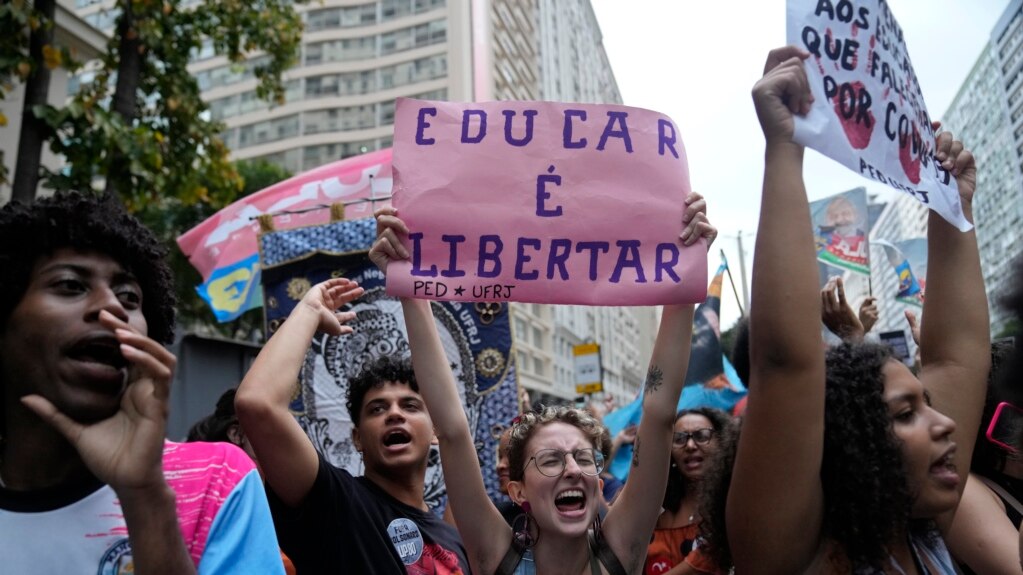Late last month, the U.S. Supreme Court ruled that race cannot be the reason for colleges to accept students.
The high court ruled that the Equal Protection Clause of the Fourteenth Amendment does not permit such decisions based on race.
The policy that many colleges used to increase the percentage of minorities they admitted was called affirmative action. They said the policy helped make their groups of students more diverse and improved the ability of minority groups to get higher education.
Those opposed to affirmative action said the policy prevented some qualified students from getting into selective universities.
Colleges in much of the U.S. were permitted to partly consider a student’s race in their admissions decisions for over 50 years.
As a result of the high court’s decision in June, most colleges and most universities must now consider factors other than race.
Quotas in Brazil
In Brazil, a version of affirmative action has been a part of admissions since 2012. The country has a law that permits both racial and economic quotas for its federal or public universities.
Three researchers wrote about the effects of affirmative action in Brazil for the Journal of Economic Surveys. They condensed their findings in a piece for The Conversation, an online publication.
Neil Lewis Jr. of Cornell University in New York state, Inacio Bo of the University of Macau and Rodrigo Zeidan of New York University’s Shanghai campus worked on the article.
They explained the background of affirmative action in Brazil and the kinds of students the policy affects. They say the policy “has proved to be quite beneficial.”
Concerns about quotas
The quotas became law in August 2012. At the time, many people worried that Brazilian students, who were already attending college, would suffer. They argued that professors would have to lower the level of their teaching in order to connect with a larger number of Black and indigenous students from poor areas. They said wealthy students with a good early education would leave for private universities. In some cases, the writers noted, wealthy students did go to other universities.
Others said Black high school students in Brazil would not work as hard because they knew the universities were holding places for them. A study showed that this was true for students who were already achieving. However, the writers said students in a lower group worked harder because they knew they could continue with their studies. Overall, they said, the quotas permitted a larger group of minority students to continue their education.
Only one of Brazil’s 81 senators voted against the law. In a story published in 2012, the New York Times quoted Brazil’s current president, Luiz Inacio Lula da Silva, as saying the policy would help some racial groups “make up for lost time.” Lula had been president from 2003 to 2010.
The researchers talked about what they considered the difference between Brazil’s quota system and the affirmative action policy in the United States.
In Brazil, at least half of the places at federal universities are held for students who are either poor or from racial minority groups. In the U.S., quotas have been unlawful for more than 40 years. But universities could use data about race and wealth to decide the best combination of students.
In Brazil, most students, including those from wealthy families, hope to go to federal universities. The schools are both high-quality and cost-free. One concern about the federal universities, however, is that openings are limited. Some people will not get in and will have to find other schools for higher education.
Benefits in Brazil
The writers said, for those who do attend the federal universities, the last 10 years of quotas have had good results.
The researchers said students admitted because of the quotas performed well. If they lacked learning compared to wealthier students, they learned the necessary skills by graduation.
In addition, some quota students got better grades than the traditional students. The researchers said not all students from wealthy parts of Brazil with good high schools were guaranteed to do well in their university studies.
When the affirmative action plan came out in Brazil, da Silva said it was hard to find Black doctors, dentists and bank supervisors. But Lewis, Zeidan and Bo said the students admitted because of affirmative action were seven percent more likely to have those jobs because of the policy. Many students, they said, would not have moved on to higher education if they did not have places set aside at the universities.
What does it mean for the U.S.?
The writers said the quota system helped diversify students in federal universities. Before 2012, it was difficult for Brazilian universities to make sure poor and minority students could receive higher education. Some universities developed policies to bring in more students from poor areas. However, that did not always make a clear difference in the race of students attending the college.
The writers of the piece worried that a similar plan by American colleges and universities would not work as well as affirmative action. They advised university leaders that race-based polices work better than other systems.
“University leaders,” they wrote, “must find…new ways to make their campuses more diverse. How to achieve that may be a challenge, but it seems to remain a worthwhile pursuit.”
In their article, the writers said other nations should be able to enact policies similar to the ones in Brazil without worrying that students will be deeply hurt. The one group they said they are concerned about is the group of wealthier students who lost their places at the federal universities because of quotas. Those students face the high cost of attending private universities.
I’m Jill Robbins. And I’m Dan Friedell.

